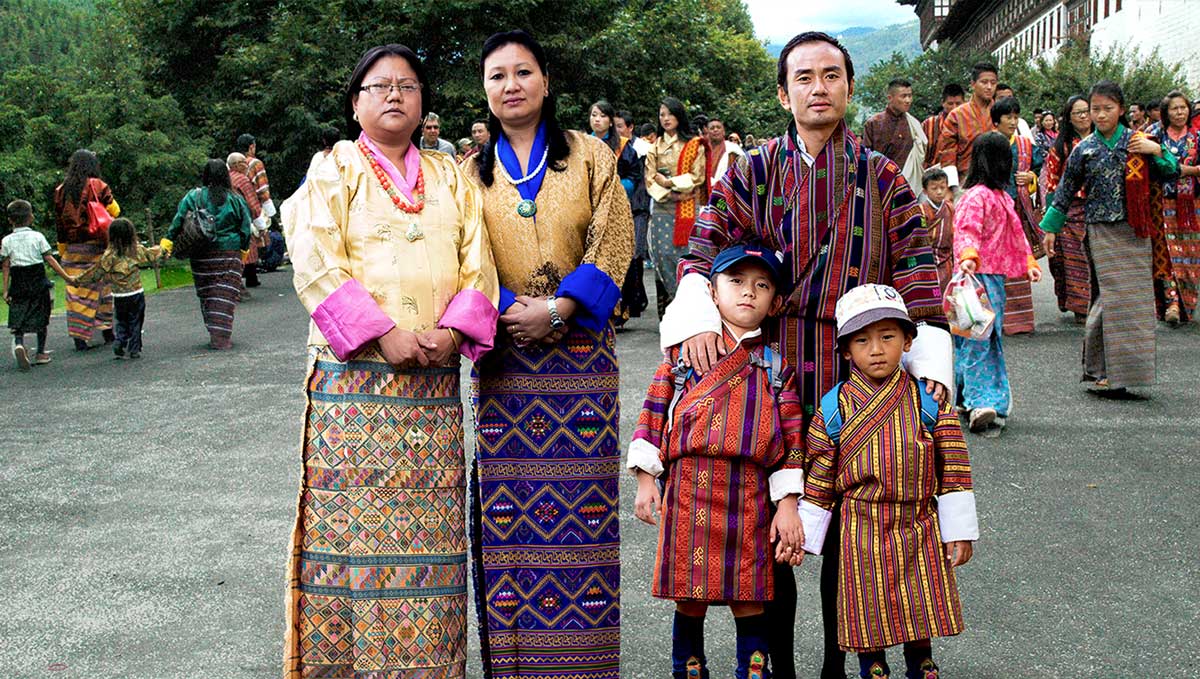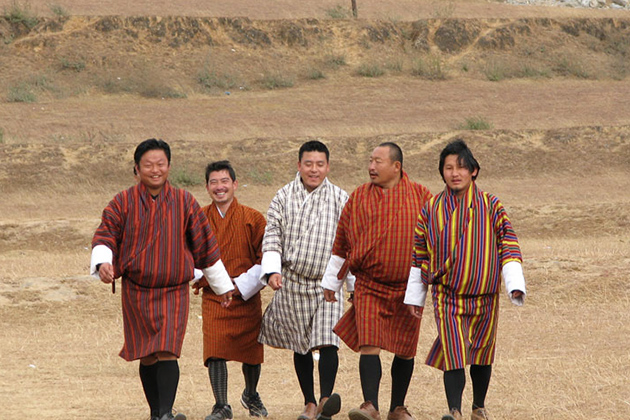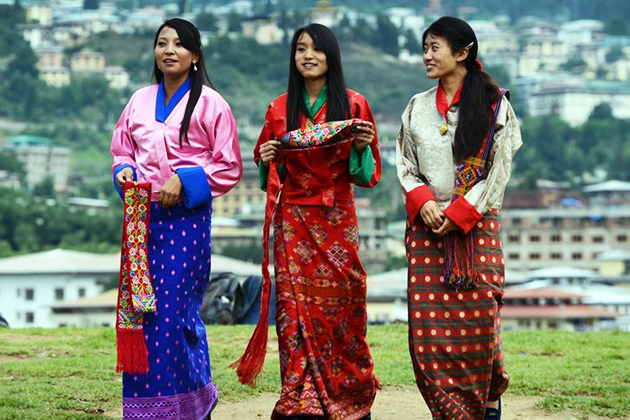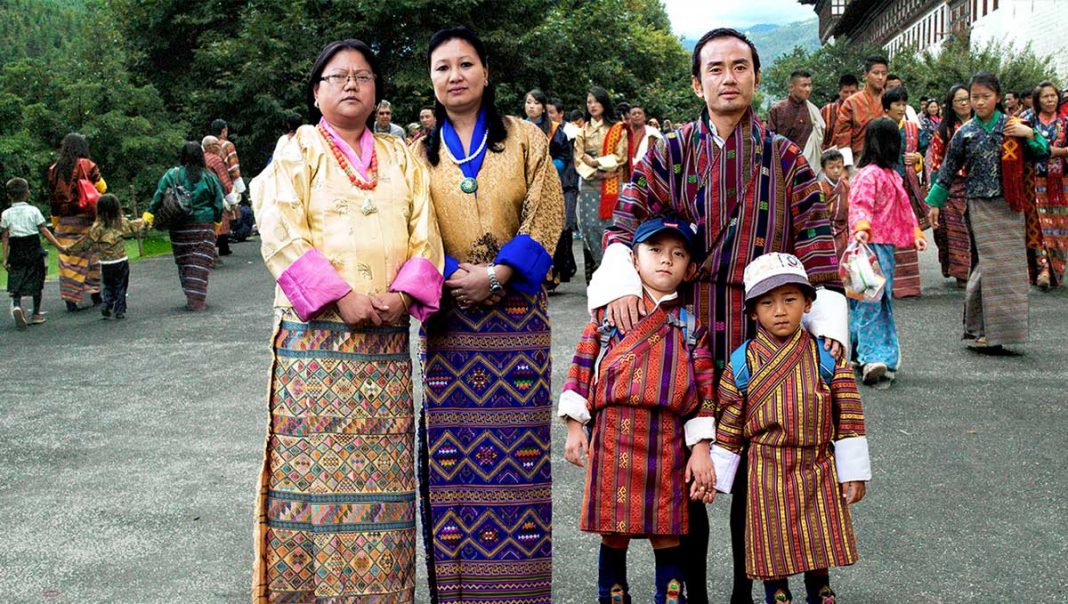The gho or g’ô is the traditional and national dress for men in Bhutan. Introduced in the 17th century by Ngawang Namgyal, 1st Zhabdrung Rinpoche, to give the Ngalop people a more distinctive identity, it is a knee-length robe tied at the waist by a cloth belt known as the kera. On festive occasions, it is worn with a kabney. The government of Bhutan requires all men to wear the gho if they work in a government office or school. Men are also required to wear the gho on formal occasions. In its modern form, the law dates from 1989, but the driglam namzha dress code is much older.


The womenfolk in Bhutan can be spotted in an apron like a dress, called ‘Kira’. This traditional outfit is a long ankle-length dress. Super comfortable and easy to be dressed in, women prefer to wear this outfit most of the time. Hand-woven, bright coloured Kiras with intricate patterns and embroideries are worn by them on special occasions.


Besides that, Bhutanese wear long scarves when visiting Dzongs and other administrative centers. The scarves worn vary in color, signifying the wearer’s status or rank. The scarf worn by men is known as Kabney while those worn by women are known as Rachus.

The Rachu is hung over a woman’s shoulder and like the scarves worn by men, they too have specific rank associated with their color. Rachus are usually woven out of raw silk and embroidered with beautiful rich patterns.
According to holidify.com; en.wikipedia and bhutan.travel















